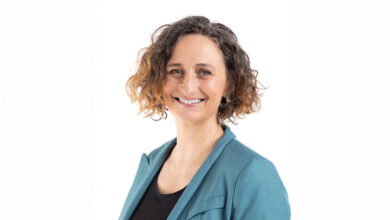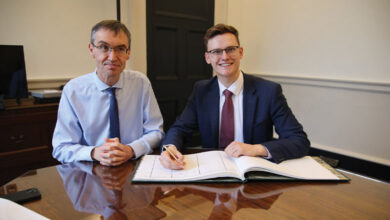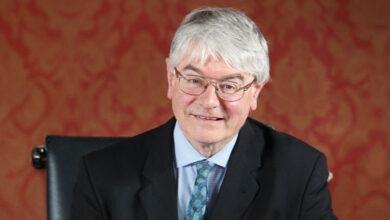Shared Island Unit
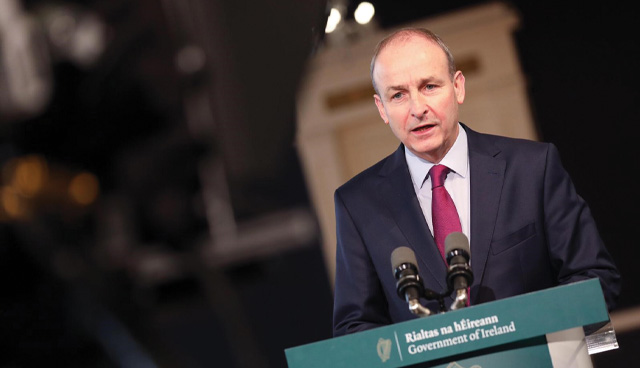
In pursuit of its goal of building a consensus around a shared future on the island of Ireland, the Government has established a Shared Island Unit. eolas examines the multi-stranded approach of the Shared Island initiative.
The creation of the Shared Island Unit (SIU) within the Department of the Taoiseach was announced in the Programme for Government document agreed by the tri-party coalition Government. Speaking with eolas Magazine in August 2020, An Taoiseach Micheál Martin indicated that the new unit would “really drive how we live together on this island” and facilitate “a conversation about how we share the island in a post-Brexit environment, into the future”.
Officially, the unit receives overall political direction from the Taoiseach and is staffed by the Civil Service. Beginning its work in September 2020, the unit operates alongside the ongoing work being pursued across government in relation to the North, which includes the efforts of the Department of Foreign Affairs, the North-South Ministerial Council, the British-Irish Council and the British-Irish Intergovernmental Conference.
Based in Dublin Castle, the SIU is intended to examine “the political, social, economic and cultural considerations underpinning a future in which all traditions are mutually respected”.
Headed by Aingeal O’Donoghue as Assistant Secretary (seconded from the Department of Foreign Affairs), the division’s two principal officers are George Burke and Eoghan Duffy. In total, the unit now has two additional staff members and “plans are well advanced” to fill an additional “two or three” posts.
A native of county Cork, O’Donoghue is a senior civil servant with extensive foreign affairs experience which includes working on north/south cooperation from 2003 to 2008. In 2013, she became Ireland’s first female Ambassador to the Republic of Korea and latterly was Director General of the European Union Division within the Department of Foreign Affairs and sat on the Department’s management board. O’Donoghue now has responsibility at Assistant Secretary level for the Shared Island Unit and the broader Britain and Northern Ireland division within the Department of the Taoiseach.
The Britain and Northern Ireland Division is responsible for supporting the work of the Taoiseach and the Government in “helping to maintain peace and develop new relationships on the island of Ireland and between Britain and Ireland”. The division is tasked with managing all aspects of British-Irish relations, particularly in the context of Brexit, alongside relationships with the UK’s devolved administrations and supporting the work of Cabinet Committee C (Brexit, Foreign and European Affairs) to this end.
The division also supports the Government as a co-guarantor of the Good Friday Agreement and its institutions. In particular, this incorporates the Taoiseach’s participation in the North South Ministerial Council and the British Irish Council as key institutions of the Good Friday Agreement.
Joint Oireachtas Committee appearance
Appearing before the Joint Oireachtas Committee on the Implementation of the Good Friday Agreement in November 2020, O’Donoghue and Duffy briefed TDs, senators and MPs from the North on the new unit.
Opening her contribution, O’Donoghue highlighted the Taoiseach’s assertion that the shared island agenda is a “whole-of-government priority” and emphasised that “the Shared Island Unit of the Department of the Taoiseach does a significant amount of work coordinating and driving this work and agenda”.
Following a line of questioning posed by Sinn Féin representatives attending the committee session, O’Donoghue stated: “Everyone should take it as read that all projects listed in the New Decade, New Approach, commitments from the Irish Government and all the projects listed in the Programme for Government are part of our agenda.”
Delivering on established commitments is the first priority for the SIU and as such, the unit is engaged in “an extensive listening and learning exercise, reaching out to a variety of organisations”. However, one new project that is under development is an all-island research hub which “would involve creating a context, a structure and ways for researchers in academia and industry on this island to collaborate”. It is envisaged that potential stakeholders might include Science Foundation Ireland and Universities Ireland.
Likewise, O’Donoghue has identified education as a key priority for the unit. “We are working with both the Department of Education and the new Department of Further and Higher Education, Research, Innovation and Science,” she noted.
On unionist engagement, the Assistant Secretary observed: “We have engaged with a variety of people. This is a two-way street. We look forward and hope we can create a space where everyone will feel comfortable engaging with us.
“We have had quite a bit of engagement with civic unionism and, although I do not want to put words into people’s mouths, a level of response that we have found heartening.”
Overall, she noted, the SIU “is about re-energising the agenda on the island in terms of all-island cooperation and a very deliberate, careful approach to developing and fostering inclusive dialogue”.
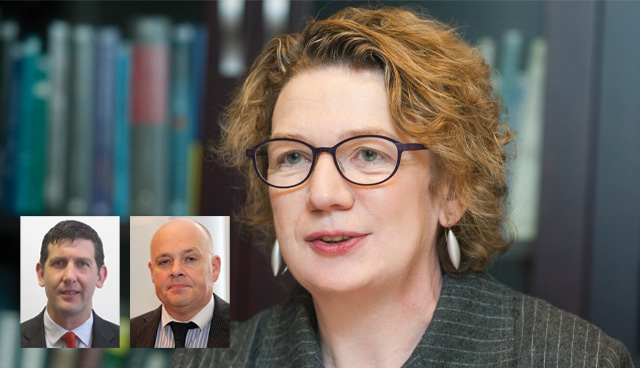
“[It] is about re-energising the agenda on the island in terms of all-island cooperation and a very deliberate, careful approach to developing and fostering inclusive dialogue.”
— Aingeal O’Donoghue, Assistant Secretary, Shared Island Unit
Approach
Addressing over 800 invited guests at an online event broadcast from Dublin Castle on 22 October 2020, the Taoiseach outlined the Government’s approach to the Shared Island initiative.
“The Shared island agenda is a priority for the entire Government and the Shared Island unit in my Department will be a driver for this work,” Martin stated. Central to his government’s approach is a commitment to building a “truly shared future”, a consolidation of efforts to build relationships and trust between traditions on the island and tangible progress on reconciliation.
As such, the focus of the SIU as a driver of the Shared Island initiative is three-pronged:
1. Commissioning research:
- a research partnership with the ESRI is being finalised;
- the National Economic and Social Council has been asked to prepare “a comprehensive report on shared island issues in 2021”; and
- there will be north/south and east/west elements to this research.
2. Fostering dialogue:
- the Taoiseach launched the Shared Island Dialogue series on 22 October 2020 which will focus on key sectoral issues and inclusive engagement on the Good Friday Agreement while seeking a broad range of perspectives and experiences.
3. Building a shared Ireland agenda (including through the delivery of Programme for Government commitments):
- the €500 million Shared Island Fund will provide multiannual capital funding for north/south projects while also supporting all-island collaborative initiatives.
Shared Island Dialogues
Organised by the Shared Island Unit, the Shared Island Dialogue series was launched the Taoiseach in October 2020 and is one component of the Government’s Shared Island Initiative aimed at fostering “constructive and inclusive civic dialogue on all aspects of a shared future on the island”. The overarching objectives of the initiative include strengthening socioeconomic and political links and promoting all-island solutions to strategic challenges facing the island as a whole.
In late November 2020, Taoiseach Micheál Martin opened the first Shared Island Dialogue seeking the views of young people on the future of the Ireland. Over 80 young people from across the island contributed to the online event titled ‘New generations and new voices on the Good Friday Agreement’.
Speaking during the Joint Oireachtas Committee appearance, SIU Principal Officer Eoghan Duffy revealed: “We envisaged that some of the dialogue work would bring people together online. We hope to capture some of those exchanges and conversations and make them publicly available to support a broader dialogue… The conclusions and themes coming from these dialogues will be very important to us in the unit in terms of how we shape the work and make it publicly available.”
Shared Island Fund
As part of Budget 2021, the Government announced a €500 million Shared Island Fund which will be made available over the next five years up to 2025. The multiannual capital funding will be “ring-fenced for Shared Island projects” and will be disbursed via a governance arrangement between the departments of the Taoiseach, Foreign Affairs and Public Expenditure and Reform “in line with Programme for Government priorities”. Budget 2021 outlined that €50 million of this funding will be allocated for 2021.
The Taoiseach indicated that his government was providing the resources to “deliver on our commitment to build a shared island underpinned by the Good Friday Agreement”.
“The Shared Island Fund will foster new investment and development opportunities on a north/south basis and support the delivery of key cross-border infrastructure initiatives set out in the Programme for Government.
“It also opens the way for investing in new all-island initiatives in areas such as research, health, education and the environment, addressing the particular challenges of the north-west and border communities, achieving greater connectivity on the island and enhancing the all-island economy and all aspects of north/south cooperation,” he said.
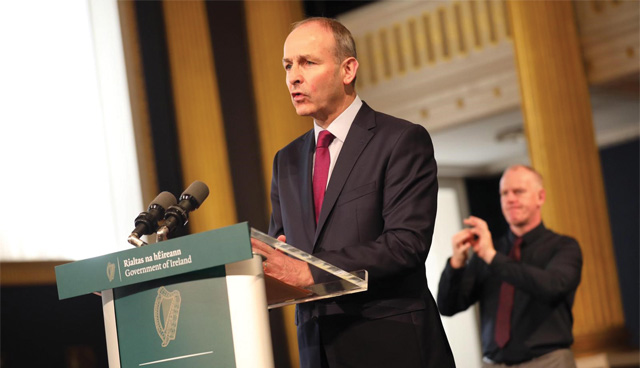
“The shared island agenda is a priority for the entire Government and the Shared Island unit in my Department will be a driver for this work.”
— An Taoiseach, Micheál Martin TD
SDLP deputy leader Nichola Mallon MLA, the North’s Infrastructure Minister, welcomed the Taoiseach’s commitment to work in partnership with the Northern Executive to deliver key cross-border infrastructure projects which include the Narrow Water Bridge (between counties Louth and Down), the A5 (an extension of the N2 between Dublin and Derry), the Ulster Canal (from Fermanagh to Armagh via Monaghan), the Sligo-Enniskillen greenway (subject to findings of a feasibility study) and the suggested high speed rail link between Cork and Belfast via Dublin (work is ongoing to examine the feasibility of extending the link to Derry).
“I welcome the shared vision, shared determination and shared commitment of An Taoiseach and the Irish Government to delivering a new shared island, better connected and better served by all-island infrastructure,” Mallon stated.
Unionist response
However, the inclusive overtures made by the Government have been roundly rejected by unionism. In October 2020, Alistair Bushe, editor of the News Letter, the North’s most unambiguously unionist daily newspaper, wrote “[Micheál] Martin is battling republicans within his own party, as well as Sinn Féin. The Shared Island Unit is part of a bid to undercut Sinn Féin. That might be logical, and even admirable. All the same, unionists should have nothing to do with it”.
Similarly, Ulster Unionist Party leader Steve Aiken MLA stated: “No unionist sees any merit in the Shared Island Unit, and we’ve told the Taoiseach that directly.” Suggesting that the unit is “an extra unnecessary layer of bureaucracy for what is political expediency”, Aiken advocates instead for a Shared Islands Unit to repair and enhance relations between Britain and Ireland.
Meanwhile, speaking with the News Letter, the DUP’s leader in the British House of Commons, Jeffrey Donaldson MP stated: “We’re certainly not opposed to cooperation, where that’s to mutual benefit. But we are clear there is a difference between cooperation and interference and it’s important those lines are very clearly laid in terms of any of the kind of projects the Taoiseach has mentioned.”

